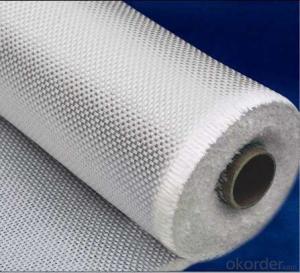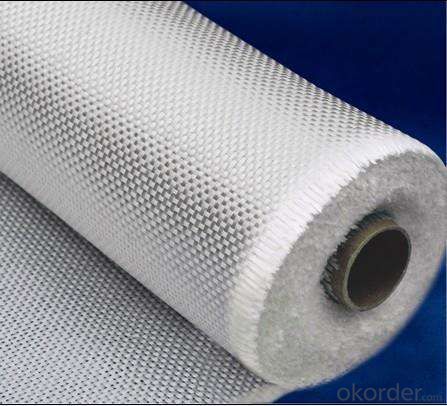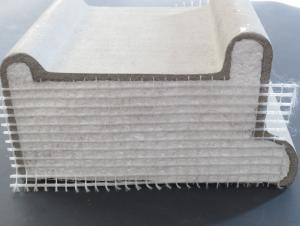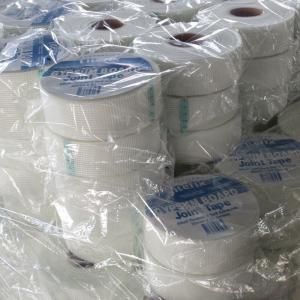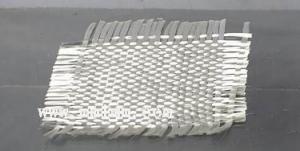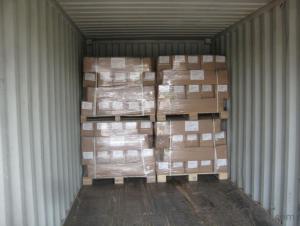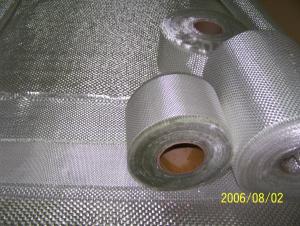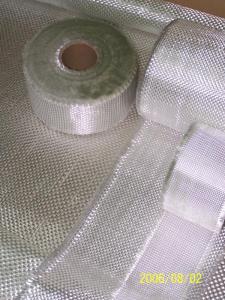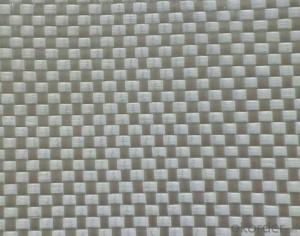E-GLASS FIBERGLASS WOVEN ROVING FABRIC EWR600
- Loading Port:
- Qingdao
- Payment Terms:
- TT OR LC
- Min Order Qty:
- 100 kg
- Supply Capability:
- 1000000 kg/month
OKorder Service Pledge
OKorder Financial Service
You Might Also Like
Specification
EWR600 woven roving from E-glass direct roving by weaving machines.
Applicable for hand lay-up process, mould pressing, machinery formation.
Compatible with unsaturated polyester resin and vinyl resin.
【Characteristics】 【Product code】
Thickness steady EWR600-1000
Free of contamination E E-glass
Fast wet out WR woven roving
High laminate strength 600 unit weight(g/m2)
Good mechanical properties 1000 net width of fabrics(mm)
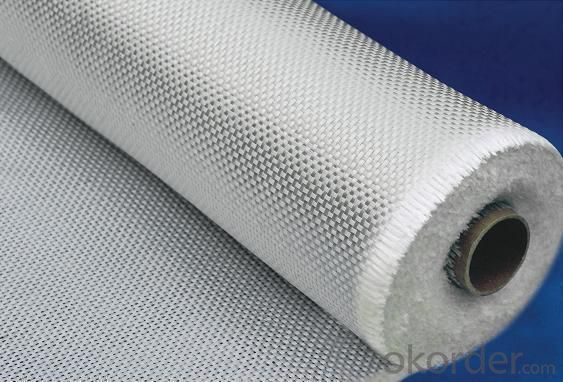
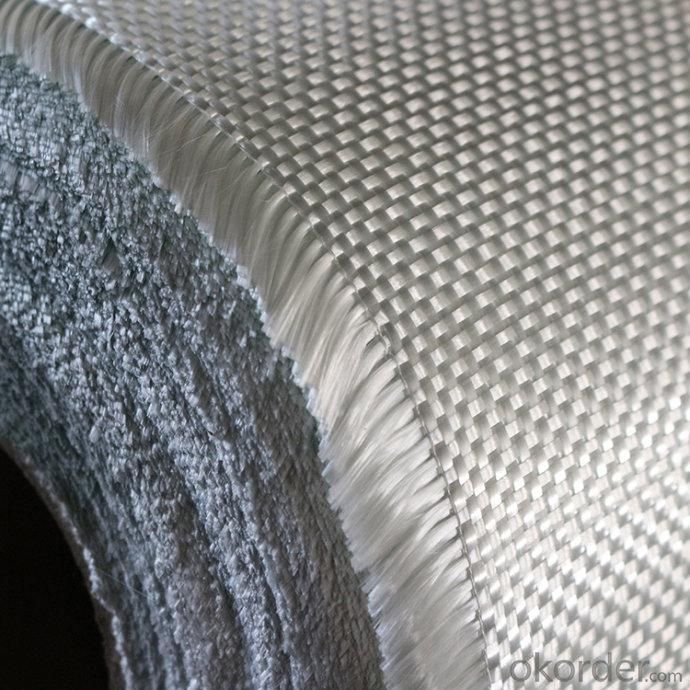
【Technical data】
Unit Weight (g/m2) | Warp | Weft | Moisture (%) | Loss on ignition (%) | Tensile strength on warp(N) | Tensile strength on weft(N) | ||
| Tex | Density (roving/250px) | Tex | Density (roving/250px) | |||||
| 600±8% | 1200±5% | 25±10% | 1200±5% | 25±10% | ≤0.2 | 0.4~0.8 | ≥4000 | ≥3850 |
| According to the standard GB/T 18370-2001 | ||||||||
- Q: How is fiberglass fabric used in the production of insulation jackets?
- The production of insulation jackets heavily relies on fiberglass fabric, which possesses exceptional thermal resistance, durability, and fire-retardant properties, thus making it a widely chosen outer layer material. Insulation jackets serve the purpose of providing thermal insulation and safeguarding various industrial equipment, pipelines, and machinery against extreme temperatures, moisture, and other environmental factors. In the manufacturing process of insulation jackets, fiberglass fabric is commonly utilized as the outermost layer. This fabric is crafted from fine glass strands that are interwoven to create a robust and flexible textile. The structure of fiberglass fabric allows it to trap air amidst the fibers, forming an insulating layer that regulates temperature and prevents heat loss or gain. To enhance its resistance to chemicals, abrasion, and weathering, the fiberglass fabric employed in insulation jackets is usually coated with a protective layer, such as silicone or acrylic. This coating also improves the fabric's ability to repel moisture, preventing condensation and potential damage to the insulation material. Insulation jackets fabricated using fiberglass fabric offer numerous advantages. Firstly, the high resistance of fiberglass fabric to elevated temperatures makes it suitable for applications necessitating insulation in hot environments. It can endure temperatures ranging from -200°C to 540°C (-328°F to 1004°F), ensuring long-lasting protection for the covered equipment. Secondly, fiberglass fabric is lightweight and flexible, facilitating effortless installation and removal of the insulation jackets. Its flexibility enables it to conform to the shape of the equipment, ensuring a snug fit and optimal insulation performance. Moreover, fiberglass fabric is renowned for its excellent fire resistance properties. It is inherently non-combustible and does not contribute to the propagation of flames, thereby making it a safe material for industrial use. In conclusion, fiberglass fabric plays a crucial role in the production of insulation jackets due to its thermal resistance, durability, fire-retardant properties, and ability to repel moisture. These characteristics make it an ideal material for safeguarding industrial equipment against extreme temperatures and environmental factors.
- Q: Construction method of organosilicon waterproof coating
- Basic level treatment: the surface of the base layer is required to be smooth, and uneven sand lifting is not allowed.
- Q: Can fiberglass fabrics be used for reinforcement in wind turbine blades?
- Yes, fiberglass fabrics can be used for reinforcement in wind turbine blades. Fiberglass fabrics have several properties that make them suitable for this application. Firstly, they have high strength-to-weight ratio, which means they provide excellent strength without adding excessive weight to the blades. This is crucial for wind turbine blades as they need to be lightweight to efficiently capture wind energy. Additionally, fiberglass fabrics have excellent fatigue resistance, which is important for wind turbine blades as they are subjected to constant cyclic loading due to wind forces. The ability of fiberglass fabrics to withstand repeated stress without degradation ensures the longevity and durability of the blades. Moreover, fiberglass fabrics have good dimensional stability, meaning they do not shrink or expand significantly when exposed to temperature variations or moisture. This property is essential for wind turbine blades as they need to maintain their shape and structural integrity in varying environmental conditions. Furthermore, fiberglass fabrics are corrosion-resistant, which is beneficial for wind turbine blades as they are exposed to harsh outdoor environments with high levels of moisture and salt. The corrosion resistance of fiberglass fabrics helps to protect the blades from degradation and increases their lifespan. Overall, fiberglass fabrics offer a range of properties that make them suitable for reinforcement in wind turbine blades, including high strength-to-weight ratio, fatigue resistance, dimensional stability, and corrosion resistance. These properties contribute to the efficient and durable operation of wind turbines.
- Q: Can fiberglass fabric be used for making filters for air purifiers?
- Yes, fiberglass fabric can be used for making filters for air purifiers. Fiberglass is a commonly used material in air filtration due to its high efficiency in capturing small particles and its durability. It can effectively trap dust, pollen, and other airborne contaminants, making it suitable for air purification purposes.
- Q: Can fiberglass fabrics be used for protection against electromagnetic interference?
- Indeed, fiberglass fabrics have the capability to serve as a means of safeguarding against electromagnetic interference (EMI). Due to its exceptional electrical insulation properties, fiberglass is widely employed as a shielding material across diverse applications. Notably, it possesses a remarkable dielectric strength, low electrical conductivity, and effectively weakens the impact of electromagnetic waves. By utilizing fiberglass in fabric form, one can fashion EMI shielding curtains, blankets, or covers to shield sensitive electronics and equipment from external electromagnetic radiation. The woven structure of fiberglass fabrics not only offers durability and sturdiness in terms of shielding, but also facilitates flexibility and ease of use. Moreover, fiberglass fabrics boast thermal insulation and fire resistance properties, rendering them suitable for a broad array of applications necessitating EMI protection.
- Q: What are the different fiberglass fabric coatings for oil resistance?
- There are several different fiberglass fabric coatings available that provide oil resistance. Some of the commonly used coatings include: 1. Neoprene: Neoprene coatings are highly resistant to oil and offer excellent durability. They provide a strong barrier against oil penetration and are commonly used in applications where oil resistance is essential. 2. Nitrile: Nitrile coatings also offer excellent oil resistance and are known for their resistance to chemicals and abrasion. They provide a reliable barrier against oil and are often used in industrial settings where exposure to oil is frequent. 3. PVC: PVC coatings are resistant to oil and provide good durability. They offer moderate oil resistance and are commonly used in applications where a balance of oil resistance and flexibility is required. 4. Polyurethane: Polyurethane coatings offer good oil resistance and are known for their flexibility and abrasion resistance. They provide a strong barrier against oil penetration and are commonly used in applications where both oil resistance and flexibility are important. It's important to note that the effectiveness of these coatings may vary depending on the specific application and the type of oil or chemical being used. It is always recommended to consult with the manufacturer or supplier to determine the most suitable coating for your specific needs.
- Q: Can fiberglass fabric be used for roofing?
- Certainly! Roofing applications can indeed utilize fiberglass fabric due to its lightweight and durable nature. This material, widely used in the construction industry, is renowned for its robustness and resistance to corrosion, making it an appropriate choice. By reinforcing roofing systems, fiberglass fabric enhances their strength and stability. It is commonly combined with other materials like asphalt or rubber to create a more resilient and enduring roof. Furthermore, the fire-resistant property of fiberglass fabric ensures an added layer of safety for the roofing system. In summary, fiberglass fabric proves to be a trustworthy and cost-effective alternative for roofing projects.
- Q: How do fiberglass fabrics perform in terms of heat resistance?
- Fiberglass fabrics have excellent heat resistance properties. They can withstand high temperatures without melting or losing their structural integrity. This makes them suitable for various applications where heat protection is required, such as insulation materials, fireproof clothing, and thermal barriers.
- Q: Can fiberglass fabric be used for reinforcement in chemical storage tanks?
- Yes, fiberglass fabric can be used for reinforcement in chemical storage tanks. It is highly resistant to corrosion, chemicals, and extreme temperatures, making it a suitable material for reinforcing tanks that store various chemicals. Additionally, fiberglass fabric is lightweight and has high tensile strength, providing structural support to the tank while maintaining its integrity.
- Q: What are the main properties of fiberglass fabric?
- The main properties of fiberglass fabric include high tensile strength, excellent heat resistance, good dimensional stability, and strong chemical resistance. It is also lightweight, durable, and has low thermal conductivity. Additionally, fiberglass fabric is non-flammable and provides good insulation properties.
Send your message to us
E-GLASS FIBERGLASS WOVEN ROVING FABRIC EWR600
- Loading Port:
- Qingdao
- Payment Terms:
- TT OR LC
- Min Order Qty:
- 100 kg
- Supply Capability:
- 1000000 kg/month
OKorder Service Pledge
OKorder Financial Service
Similar products
Hot products
Hot Searches
Related keywords
